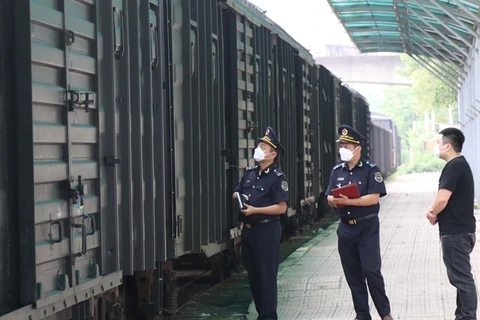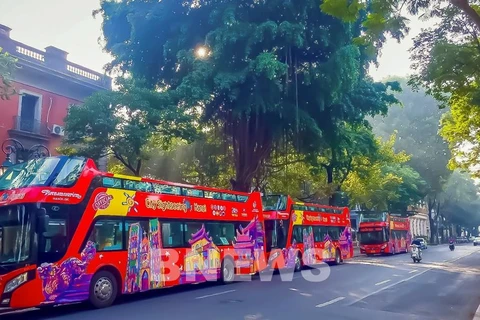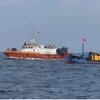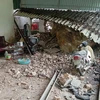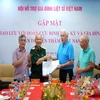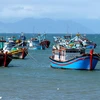 Currently, Hanoi is the most important railway hub in the country with many connecting routes. (Photo: Minh Son/Vietnam+)
Currently, Hanoi is the most important railway hub in the country with many connecting routes. (Photo: Minh Son/Vietnam+) Poor infrastructure
According to an initial report on the planning of railway routes and stations in Hanoi by the Transport Engineering Design Incorporated (TEDI) and the Consulting Center for Transport Development Investment (CCTDI), Hanoi serves as the most important railway hub in the country with five existing railway lines.
Four of these lines are located north of the Red River Delta, namely the Hanoi-Ho Chi Minh City Railway, Hanoi-Lao Cai, Hanoi-Thai Nguyen (Quan Trieu), Hanoi-Lang Son, and Hanoi-Hai Phong.
The city also features a railway ring, which comprises two branches: the western and eastern branches. The western railway connects from Hanoi-Lao Cai through Thang Long bridge, Kim No, Phu Dien, and the outer loop of Ha Dong district, linking with the Hanoi-Ho Chi Minh City railway at Ngoc Hoi. Meanwhile, the eastern railway is still under construction.
There is also a railway, namely Yen Vien-Ngoc Hoi in the inner city. Notably, two routes connect international transport and align with the direction of developing “two corridors, one economic belt.” They are Hanoi-Lang Son-Peng Tuong route (China) and Hanoi-Lao Cai-Kunming route (China).
However, the Consulting Center for Transport Development Investment (CCTDI) has assessed that the railway transport system, in general, is outdated and lags behind regional trends, making it less competitive compared to other modes of transportation.
Moreover, the system has not fully met the region’s needs nor the requirements of socioeconomic development.
The primary reason for these limitations is attributed to several factors, according to the consulting center.
Firstly, the majority of the railway lines consist of narrow gauge single tracks, with outdated rails and sleepers.
Additionally, the signal information systems are also outdated, further hindering the efficiency and safety of the railway system when compared to countries with modern rail networks.
Moreover, the existing railway stations, including prominent ones such as Hanoi, Giap Bat, Gia Lam, Yen Vien, and Dong Anh, are small, narrow, and have outdated infrastructure and short station routes, which make it impossible to accommodate trains with large loads.
Although there are plans to construct new freight and passenger train stations, such as Ngoc Hoi and Bac Hong, these stations are still under construction.
 The outdated railway infrastructure has made it difficult for the railway industry to compete with other means of transport. (Photo: Minh Son/Vietnam+)
The outdated railway infrastructure has made it difficult for the railway industry to compete with other means of transport. (Photo: Minh Son/Vietnam+) Planning to build four new routes connecting Hanoi
Regarding the development orientation of Hanoi’s major railway networks, experts suggested maintaining the operation of five existing routes including Hanoi-Ho Chi Minh City; Hanoi-Hai Phong; Hanoi-Dong Dang; Hanoi-Lao Cai; and Hanoi-Thai Nguyen.
In addition, the Hanoi railway network has in its plans to build four new lines on the Hanoi-Ho Chi Minh City corridor (high-speed railway); Lao Cai-Hanoi-Hai Phong; Hanoi-Lang Son; Hanoi-Quang Ninh (on the basis of the Pha Lai-Ha Long-Cai Lan route); new development of the belt railway system including the eastern belt connecting Ngoc Hoi-Lac Dao-Bac Hong-Thach Loi, and the western belt connecting Ngoc Hoi-Thach Loi.
 Hanoi aims to build more new routes to increase the capacity of passenger and freight trains. (Photo: Vietnam+)
Hanoi aims to build more new routes to increase the capacity of passenger and freight trains. (Photo: Vietnam+) Newly-built railway lines including North-South high-speed railway, Lao Cai-Hanoi-Hai Phong, Hanoi-Lang Son, the eastern and western belt routes, and Yen Vien-Pha Lai-Ha Long-Cai Lan./.
